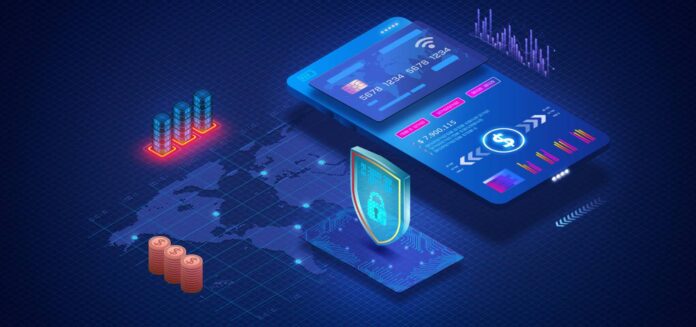Fund tokenisation revolutionises fund commercialisation. Tokenised funds create operational and cost efficiencies by streamlining processes, while giving the ability to keep up with changing end investor needs, says Bernard Simon of FundsDLT.
Fuelled by evolving investor needs and investment democratisation trends, digital assets and tokenisation are gaining significance. The future is one where investors expect integrated and personalised products delivered digitally, while financial institutions want to be in a better position to serve a mass market, all while cutting costs and being information-savvy.
Now, on one side of the financial industry, new and existing service providers are starting to implement solutions to provide custodial services for digital native assets. On the other side, the last few years have seen blockchain-based tokenisation of bonds, real estate and venture capital funds, among others. Importantly, a report in January 2023 on tokenisation and asset servicing from HSBC and Northern Trust estimated that by 2030 between 5 and 10% of all assets would be tokenised.
As the tokenisation of assets continues to gain momentum, we will see more and more financial institutions exploring the possibilities of digital assets and access to them. Digital assets being defined as “digital representations of a value or a right which may be transferred and stored electronically, using DLT or similar technology.” Thus, a new generation of market infrastructure is emerging.
A fundamental shift for investment funds
For investment funds, there are increasing numbers of live cases, and the fund industry is at the start of a fundamental shift in how investment funds are bought and sold. So, let’s look deeper into investment fund tokenisation.
The key difference between tokenised funds and traditional funds is the way in which they are issued and commercialised through a distribution network. Today, investment funds issue shares or units in book entry form, centralised in a database, and the buying and selling of them is done via messaging, whether via SWIFT or FIX protocols or even fax, through a complex distribution chain. In contrast, tokenised investment funds use decentralised blockchain technology to both issue and manage fund shares or units as digital tokens. Investors can buy, sell or transfer them on a blockchain-based network.
The decentralised nature of the information is crucial. The use of DLT ensures data integrity throughout the distribution chain, thus eliminating redundant and siloed record-keeping. Data is now immutable, accessible and traceable throughout the entire fund distribution chain. Fund tokenisation also allows for increased level of automation, thus creating conditions for better operational efficiency across all actors.
Tokenise for both investors and the distribution chain
Tokenisation of investment funds has several further advantages for investors, asset managers and intermediaries. One benefit is increased liquidity. Tokenisation allows investors to buy and sell investment fund shares in almost real-time. This increased liquidity can result in a more efficient market for investment funds in general.
“While it’s possible that public permissioned blockchains may become dominant in the digital assets space in the future, private permissioned blockchains remain the best option for tokenising investment funds at present.”
Another benefit of tokenisation is the reduced operational and back-office costs for all actors in the distribution chain. By streamlining the process of subscriptions and redemptions, and sharing amongst these intermediaries the management of business rules, tokenisation cuts operational costs and frictions that are inherent in the various systems today. It also, therefore, makes investing in funds more accessible to a mass market of investors.
The fractional ownership nature of tokenisation can be particularly useful for alternative investment funds, making it easier for investors to buy and sell shares in these. This can also enable access to asset classes that may have been previously difficult, such as real estate or private equity.
Tokenise on private blockchains
For many people, professionals included, blockchain and tokenisation are linked to public blockchains and cryptocurrencies. But there is another way: private blockchains.
Before diving in, it’s important to note that there are four types of blockchains that are available for tokenising traditional financial instruments. These can be either public or private, based on who owns the data infrastructure, and permissionless or permissioned, based on who can read, write or commit and mint or burn tokens. The four types are: public permissionless blockchains (e.g. Bitcoin), public permissioned blockchains (e.g. Ripple), private permissionless blockchains (e.g.Holochain) and finally, private permissioned blockchains (e.g. Quorum). While it’s possible that public permissioned blockchains may become dominant in the digital assets space in the future, private permissioned blockchains remain the best option for tokenising investment funds at present. This is because they offer a suitable platform for creating shared networks while also providing adequate security and control over who can access and modify the data.
The advantages of using a private blockchain over a public blockchain for tokenising financial assets are many.
Private blockchains offer greater confidentiality for sensitive data, such as investor information and transaction details. They allow for greater control over who can participate and how the network is operated. They can also be designed to comply with specific requirements, such as KYC and AML regulations, while public blockchains are lagging in this field.

Furthermore, fund distribution is complex with many actors and that is why interoperability is important. Private blockchains can be built to be interoperable with other systems and networks, allowing for integration with existing legacy infrastructure. It is also foreseen that private blockchains will interoperate with public blockchains, once these are ready and mature for public business. In addition, it is questionable that public blockchains are useful for products as liquid as some investment funds. Investors can redeem from most funds daily (or otherwise, depending on the funds’ rules) and there is no need for any counterpart besides the fund to guarantee liquidity.
The final point is scalability and speed. Private permissioned blockchains, besides being scalable to a very high degree, generally have faster transaction times as they involve fewer participants and a more centralised consensus mechanism. This can be crucial for financial applications and can enable near-instant settlement.
The rise of digital custody services
Initially developed to address the need for secure storage of cryptocurrencies, digital custodians have since evolved into a professional activity with ongoing development. From their early days offering basic security to individuals, we now see established financial institutions like Fidelity, HSBC and BNY Mellon entering the digital custody space and expanding their offerings to include a wider range of digital assets such as tokenised securities and digital bonds. For tokenised funds, digital custody solutions ensure that investors’ keys are securely held and that the fund operates in compliance with distribution regulatory requirements.
As the tokenisation of assets continues to gain momentum, it is very likely that more traditional financial institutions and new entrants will provide a growing range of services to support the expanding tokenised asset ecosystem.
Three models to adopt tokenised funds.
In this time of transition for the fund industry, there are possibilities for new fully digital and tokenised investment funds, as well as opportunities around hybrid solutions that take into account existing legacy systems.
Asset managers and asset services can take advantage of two possible operating models. The first is a ‘full issuance’ model which allows for a digital-native tokenised fund to be created on a platform. This model includes connectivity to all investors and the maintenance of the complete shareholder register. On the other hand, the second model – ‘sub-issuance’ – enables the co-existence of the traditional and tokenised models for the same fund, providing a hybrid solution.
Additionally, for distributors and fund platforms, it is possible to have an operating model where these companies maintain accounts and orders and settle transactions on multiple funds. This model encompasses a type of digital custody solution for funds issued on a blockchain. For all other off chain funds, there is a need to interconnect with the legacy environment.
The advantages of tokenising investment funds are many and tokenisation’s time has certainly come. The ability to anticipate where distribution is going and keep up to date with changing end investor needs can be fully realised with digital native tokenised funds.
For more information, visit the FundsDLT website.
© 2023 funds europe





